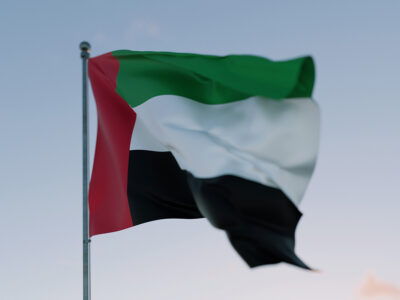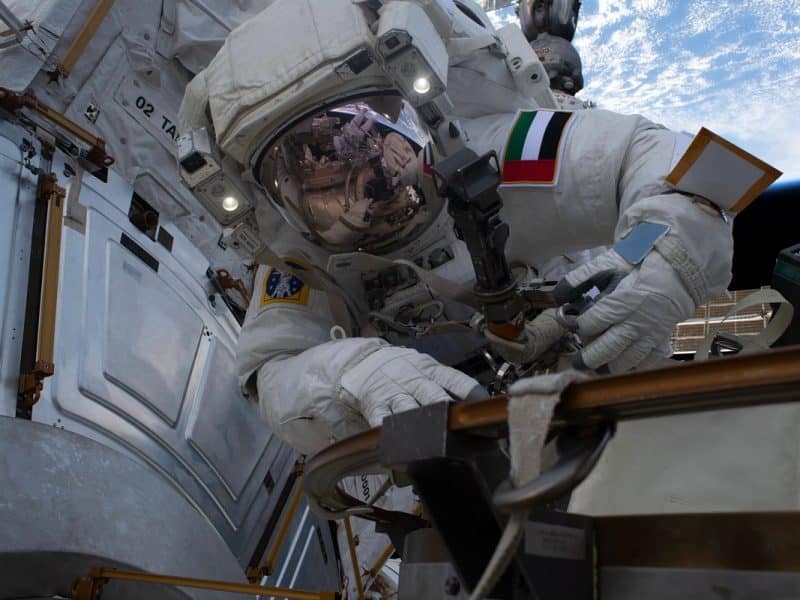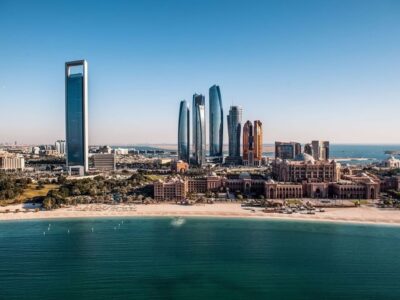The UAE space sector has achieved major breakthroughs in 2025, reinforcing its position as a global hub for advanced technology, scientific research, and knowledge-based industries.
The progress reflects the nation’s long-term commitment to developing Emirati talent, expanding international partnerships, and strengthening its contribution to global space exploration.
The announcement coincides with World Space Week (October 4–10), the annual United Nations-designated event celebrating how space science and technology advance human progress.
This year’s theme, “Living in Space,” explores humanity’s journey toward making space a future habitat through innovation and collaboration.
Six satellites launched in early 2025
The UAE began 2025 by launching six satellites during the first quarter alone. On January 4, Thuraya 4 was launched along with Mohammed bin Zayed Sat, Al Ain Sat-1, HCT-SAT 1, and the second phase of the Foresight satellite constellation.
This was followed on March 15 by UnionSat, the UAE’s first radar satellite.
Partnership for the Lunar Gateway
In February, the Mohammed Bin Rashid Space Centre (MBRSC) signed a strategic cooperation agreement with Thales Alenia Space to develop the Pressure Equalisation Unit for NASA’s Lunar Gateway station.
Under the agreement, the UAE will develop and operate the module for up to 15 years, extendable thereafter.
The 10-tonne unit (10m long and 4m wide) will give the UAE a permanent scientific role in the world’s largest lunar exploration programme — including the opportunity to send an Emirati astronaut to the Moon and priority access to advanced engineering and research data.

Rashid 2 Rover to explore Moon’s far side
In May, MBRSC signed an agreement with US-based Firefly Aerospace for its Blue Ghost Mission 2, which will deploy the Rashid 2 Rover to the far side of the Moon in 2026.
The mission will also carry payloads from the European Space Agency (ESA), NASA, and Australia, positioning the UAE among a select group of nations conducting research on the Moon’s far side.
Rashid 2 will ride on Firefly’s Blue Ghost lander stacked on the Elytra Dark orbital vehicle, enabling scientists to collect rare data critical for future lunar infrastructure technologies.
Strengthening international partnerships
MBRSC has also renewed its collaboration with France’s space agency CNES to enhance the Emirates Lunar Mission’s Rashid Rover 2, also scheduled for launch in 2026.
CNES will provide two high-resolution cameras and a CASPEX imaging module, alongside expertise in image processing and data analysis.
The partnership builds on the success of the first Rashid Rover and aims to further advance the UAE’s scientific capabilities.
Building Emirati talent through the National Space Academy
The National Space Academy, a UAE Space Agency initiative, launched the Space Mission and Satellite Engineering Programme (SMSE) in partnership with EDGE.
Delivered with EDGE entities FADA and BEACON RED, the programme equips Emirati engineers, researchers, and graduates with hands-on training in satellite design, mission architecture, and systems engineering — preparing the next generation of mission leaders.
Asteroid Belt mission enters final design phase
In April, the UAE Space Agency completed the final design phase of the Emirates Mission to the Asteroid Belt (EMA) — the Arab world’s first scientific mission to study seven asteroids between Mars and Jupiter.
The agency and the Technology Innovation Institute (TII) signed an agreement to develop the EMA Lander, which will travel aboard the MBR Explorer to study the asteroid Justitia.
TII will lead design, development, and testing, while allocating 50 per cent of the project to UAE-based companies to foster startups, attract foreign partnerships, and generate local economic opportunities.
Five years of the UAE Hope Probe
In July, the UAE celebrated the fifth anniversary of the Hope Probe, launched on July 20, 2020, from Japan’s Tanegashima Space Centre.
As the first Arab and Islamic interplanetary mission to Mars, Hope continues to deliver unprecedented data on the Martian atmosphere to research centres and universities worldwide.








